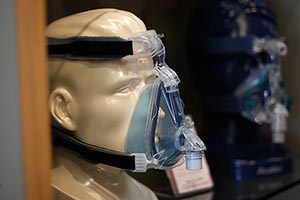Senior Reporter
Trucking, Railroad Regulators Hear Concerns at Sleep Apnea Listening Session

Trade association executives, truck drivers and medical experts voiced their concerns and suggestions at a May12 listening session in Washington about federal regulators’ plans to issue an obstructive sleep apnea regulation.
Concerns at the top of the list included the cost of sleep studies for drivers and locomotive engineers, the failure of most safety-sensitive transportation employees with apnea to use their CPAP machines and ensuring that any apnea mandates consider safety benefits over costs and driver health. Megan Bush, manager of safety policy for American Trucking Associations, said that an apnea rule should be based on sound data and analysis.
COMING MAY 18, NOON EDT: LiveOnWeb on Driver Health, Wellness From A to Zzzzz “Though OSA treatment holds promise to improve driver health, the agency should be reminded its role is to improve safety, and not driver health,” Bush told regulators. “FMCSA is prohibited from imposing rules that would have a deleterious impact on driver health, but the role is not to promulgate rules that improve it.”
Bush added, “To craft an effective rule, FMCSA must consider the prevalence of severe OSA among the workforce, the potential cost to drivers and the supply chain to address it and the corresponding safety benefits of doing so.”
Richard Pingel, an owner-operator and board member of the Owner-Operator Independent Drivers Association, said that a typical driver can spend thousands of dollars on doctors, sleep testing and equipment for treating apnea and lose a significant number of days away from the job just to complete the process.
“And in some cases, certified medical examiners are getting kickbacks for referrals,” Pingel said.
Stephen Story, president of passenger carrier James Rivers Transportation, noted that there are a number of reasons drivers can suffer from fatigue other than sleep apnea.
Those reasons could range from a tiring day at work to not getting enough sleep, Story said.
Bus driver Craig Harrison, who said he has driven 25 years without an accident, told regulators that a medical examiner sent him to his doctor solely because he had a neck size of more than 17 inches.
His doctor then sent him to a sleep specialist who diagnosed him with apnea. The entire process forced him to take two weeks off the job and resulted in a pile of medical bills, he said.
“We’re becoming a walking, talking medical cabinet,” Harrison said. “And it’s a windfall for doctors.”
James Edwards, a Washington-based representative of the National Association of Small Trucking Companies, told regulators that OSA is only one of several factors associated with daytime sleepiness among commercial drivers.
“We agree that safety should certainly be the goal of any sleep apnea rulemaking, but any new regulation must use a balanced approach that takes in consideration the practical effects,” Edwards said.
The process is inconvenient, costly, intrusive and disrupts a driver’s livelihood, he said.
Edwards added, “Anybody who’s a chubby male over 50 years old is likely to end up referred to a sleep clinic. And we have heard from our members that this is more frequent than not.”
The joint May 12 session held by the Federal Motor Carrier Safety Administration and Federal Railroad Administration was the first of three opportunities for the public to comment on the agencies’ future apnea guidance plans, currently at the advance notice of proposed rulemaking stage.
The other sessions will be held May 17 in Chicago and May 25 in Los Angeles.

